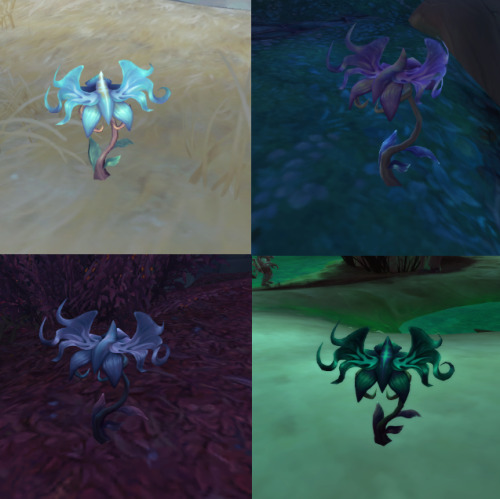#maldraxxus
Sylvanas and the Jailer’s Plan finally Revealed?
“In all known realms of the cosmos, time flows forward, ever forward. Chaotic energies in places like the Twisting Nether can affect how quickly it flows, but it only flows forward. Once an event happens, it cannot be changed. These events and choices and different possibilities naturally spin off the river of time like small creeks and estuaries, ebbing and flowing for a while . If these shades of what could have been are left alone, they will eventually dissipate into nothing. If efforts are made to preserve them (or alter them, they can indeed remain in existence indefinitely. They can even be made to feed back into the main river - dead creatures can seemingly ‘live again’ and the past (or future) may literally come back to haunt you. This is not a natural phenomenon, and the inhabitants of the main timeway will often find these experiences to be quite alarming.
But the only timeway that has a permanent effect on the cosmos is the main timeway. Creatures like the bronze dragons, who have command of temporal magic, can see all the countless tributaries of alternate universes and timelines, and they can even move back and forth to observe the past and the future.
If the main river is disrupted, it could spell doom and disaster. All life on Azeroth depends on time to flow ever forward. Without the surety that the sun will rise and set each day the seasons would not pass, the cycle of life would become meaningless, and all the living creatures would eventually die from being unable to sustain themselves. It is the most sacred mission of the bronze dragonflight to keep that from happening”. -Chronicle Vol 1
The Timeway has been Warcraft’s version of a Chekov’s gun, we know something happens to it because we know from Cataclysm that the Bronze Dragon aspect Nozdormu eventually becomes Morozond, the leader of the infinite dragonflight. Morozond, with the help of his infinite dragonflight have been trying to change the events in time to divert “The true End Time” a future in which the Old Gods win. We stopped the event known as the Hour of Twilight in Cataclysm but that Hour of Twilight may have come again in Battle for Azeroth when N’zoth was released from his prison, because you see, everything that happens, happens, you cannot stop fate from unfolding because its fixed. The bronze dragons have spent years trying to research the affects of changing minor events and while yes you can change the details you cannot change the outcome.
The End Time dungeon has always fascinated me because of the implication that foue main characters will become a sort of corrupted ‘stand in’ for our four dragon aspects with the aspect of time notably absent. Seeing the darkest manifestation of these characters, which are Baine, Tyrande, Jaina and Sylvanas, I always thought this was foreshadowing to the last four standing but the reality of this was dark. Tyrande, abandoned by Elune is trapped in the dark not knowing friend from foe and attacking blindly. Baine, blinded by rage he tries to hard to pacify, tears himself apart for not being able to protect his people as they burned (possible foreshadowing to retaliation for Teldrassil?) Jaina, who is powerful and scared, again unable to see friend from foe and think everyone is out to get her. And lastly Sylvanas who has fully mastered death and can now wipe out all life at will, and as Mozorond explains in the end of the dungeon, while this is terrible this isn’t as bad as what happens in ‘the true end time’ our inevitable future.
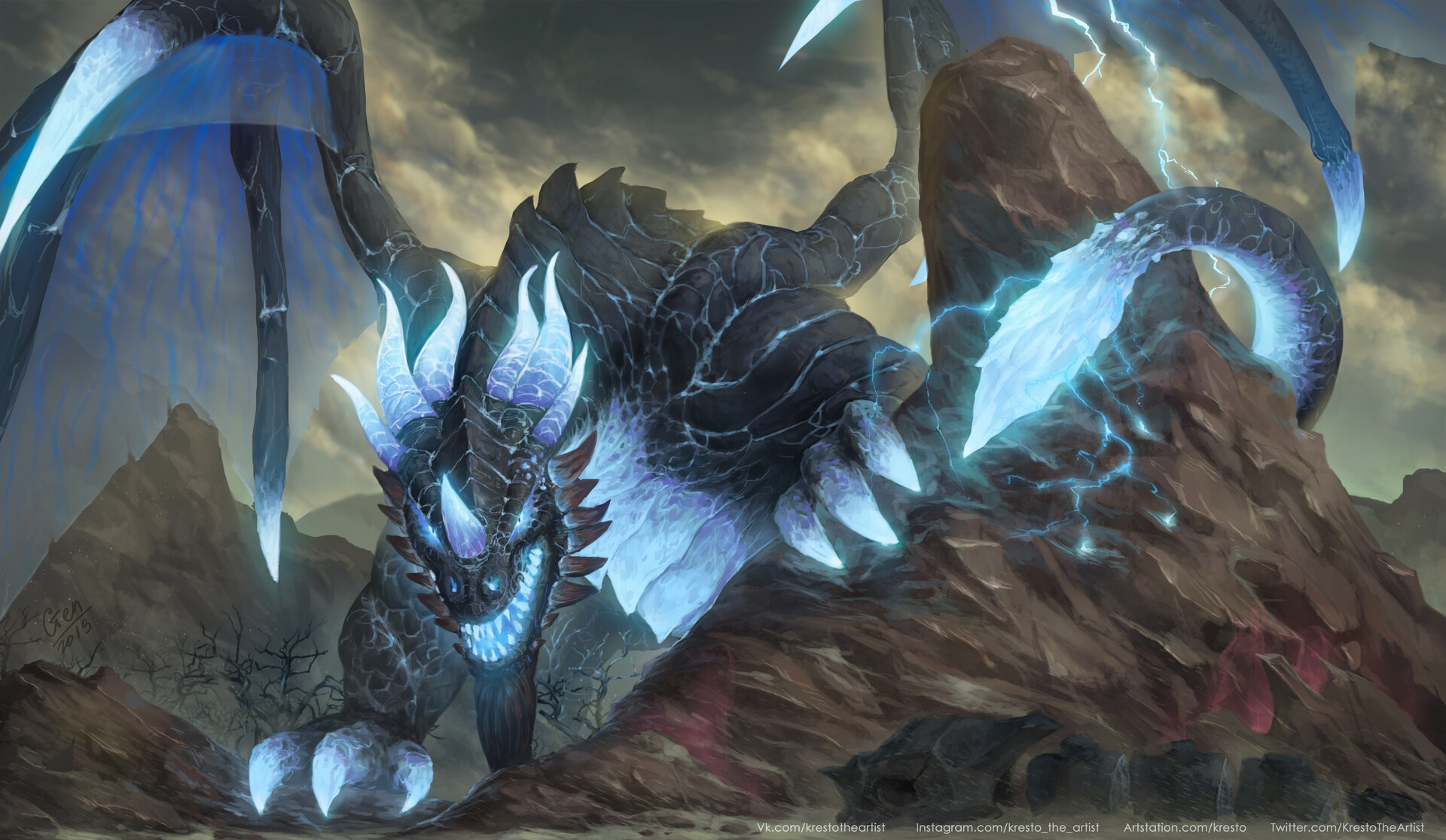
But what does Time have to do with the Shadowlands? Time is absent from the Shadowlands.
In a recent interview for sagagamer, lead narrative designer Steve Danuser when speaking about the lore of Maldraxxus really spilled the beans when it comes to some very important lore of the Shadowlands found in Maldraxxus. Not only did he suggest that the cosmic powers have all fought for dominance over the Shadowlands and have lost, thanks to the armies of Maldraxxus. The Primus has used the benefit of viewing the timeways to ensure victories in these battles. When you can see the future, it helps out smart your enemy. Here’s a snippet of Steve’s responses below:
“It is said that the Primus sought out an ally who could show him the infinite timeways, which he used to watch the same battle play out over and over again across realities. He noted how the slightest differences in strategy and troop deployment could swing the conflict toward one side or the other. After eons of such meticulous study, the Primus can instantly assess any situation and devise the most likely path to victory.”
“As you play through the storyline, you come to learn that the Primus began to suspect that there was something going on. You’ll see hints that he was involved in whatever happened with the Jailer’s imprisonment.” -Steve Danuser sagagamer interview on Maldraxxus.
So the first question is who is The Primus’ mysterious ally? well it could be Morozond or it could be Medivh, both would have the power but Medivh has been mysteriously absent and possibly dead for years so I can see this being Medivh simply because Morozond would be to easy of a guess.

Medivh’s sole purpose since he discovered Sargeras’s plan to destroy the universe and Azeroth specifically was to defend Azeroth by any means necessary. If he had uncovered a connection between The Jailer and Sargaras which is heavily hinted at and other lore speculators have also made this connection, then Medivh would be working with whatever forces were banding together to stop this, this includes us and our role that we must play in this game of chess with the universe, because Medivh is not the only one testing us. This snippet of the intro into Shadowlands quest chain stuck me as relevant.
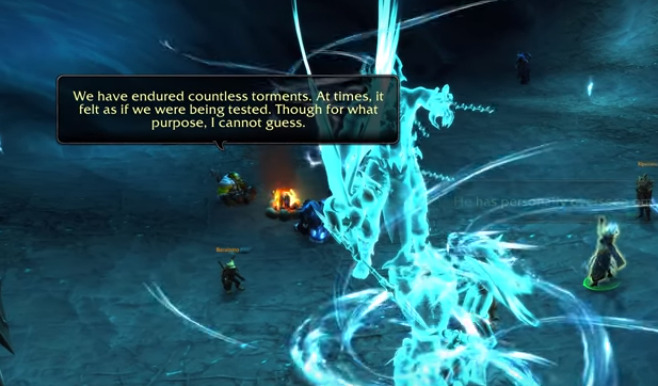
The Jailer also seems to be testing us, or more specifically, Baine and Jaina (and Thrall) Tyrande was meant also to be captured but she managed to fight off her attackers, and Sylvanas is working with the Jailer to bring about his plan.
This is all too convenient. Those taken are related to those last four standing in the End Time and Thrall, being the one who stopped the End Time the first time around, This is no coincidence. Steve also teased that Thrall would find his way to Maldraxxus to have an emotional reunion with his mother.
Sylvanas’s speech at the end of Shadow’s Rising about dismantling the ladder of the universe not rung by rung but all at once suggests that she has plans to do something drastic and the Jailer understands this plan. I feel like this is going to lead to a Shadowlands endgame where they work together to destroy the Timeway.
I’m super excited to get into Maldraxxus and see how the story adds more plausibility to this theory.

Preface
- Interested in the potential benefits that might come from plumbing the depths of the Maw, Cartel Ve planned an exploratory venture into the dark realm. The expedition, overseen by Ve’nari, was a success. However, Ve’nari had her fellow cartel members killed to ensure she alone would have sole access to both the Maw Walkers and the Maw’s resources (8, 132).
- Cartel Ve and Cartel Ta are rivals (8, 29).
- It is loosely implied that the Brokers altered their demeanor, if not also their appearances, to look friendly and appealing to mortals. They refer to their outward form as their “encounter suits” (9).
Chapter One: Rites of the Dead on Azeroth
- After a night elf has died, they are ritually cleansed in pools of moonlit water. Kaldorei priestesses deftly weave arcane and nature magic together to mend the dead body in preparation for a final viewing. Throughout this process, the priestesses sing songs in their temples honoring the deceased’s achievements and sacrifices in life. The deceased is then covered in a burial shroud, placed on a bier, and brought to a grove of trees where a druid magically ensconces the corpse in various plants so it can be returned to nature (13).
- Some night elves form a strong enough bond to nature that even after their death, they remain tethered to the mortal realm as a wisp [Quest: Wisp in the Willows]. This phenomenon may, however, be in part due to the intervention of the elven moon goddess, Elune (13).
- At some point in the past, Trade Prince Donais died and passed on to Revendreth (14).
- During goblin funerals, it is customary to read off a list of all the assets the deceased held in life (14).
- The Kul Tirans choose not to bury their people, believing instead that the fallen should be given to the sea [Quest: Lost, Not Forgotten, Item: Soggy Treasure Map]. An artifact called the “Dead Ringer” is a crucial part of these Kul Tiran funerary rites. In ringing the bell, it is believed the deceased’s soul is able to rise above the depths as their body sinks beneath the waves (17).
- Mourners traditionally release star moss – a magical flower notable for its sensitivity to feelings of loss – into the ocean during Kul Tiran funerals [Quest: Here In Spirit], (17).
- Cairne’s wife lingered in the mortal world as a spirit after her passing to keep watch over her bondmate and son. It is unclear why she was not brought to the Shadowlands by the Kyrian. That said, it is known that Kyrian cannot take the souls of those who are tethered by a sufficiently powerful force to their plane of origin (18).
- Tauren, not unlike orcs, construct large funeral pyres to cremate their fallen on. The ashes of their fallen are scattered to the winds, at which point it is believed they rejoin the Earth Mother (18).
- Tauren heroes are buried at Red Rocks in Mulgore. According to the tauren, the sacred nature of Red Rocks and other burial sites enables the spirits of the dead to briefly cross the Veil and talk to the living – something which the Brokers are highly skeptical actually occurs, given the design of the Shadowlands (18).
Chapter Two: Entering the Shadowlands
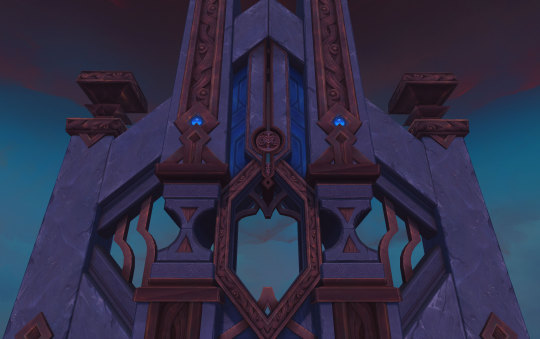
- A mortal soul accumulates anima through its deeds and experiences in life. As a result, anima varies from soul to soul (24, 30).
- The Brokers have been unable to catalogue every single afterlife in the Shadowlands, for there are too many to count (27).
- The origins of the Maw are unknown to even the Brokers. According to a member of Cartel Ta, it seems the Maw’s origins have all but been “purged from the annals of history” (29).
- The elemental forces of spirit and decay may or may not have an influence on how much anima a soul produces in their lifetime (31).
Chapter Three: Oribos
- Various Broker cartels financed expeditions to find and stake proprietary claim on Oribos. It was eventually discovered – perhaps accidentally – by an Au cartel navigator (35).
- The coiled serpent, thought to embody the infinite cycle, is a well-known symbol of the First Ones (36).
- The Brokers believe that Oribos was built explicitly for the judgement of souls well before the first mortal soul ever arrived in the Eternal City (38).
- On the other hand, the Arbiter’s attendants claim that the Arbiter chose to judge souls in Oribos of her own volition, which contradicts the Brokers’ theory (38).
- Old, worn records seem to suggest that there was a time when the Arbiter was not as benevolent as she is made out to be today (38). Of course, that is because the Jailer formerly held the role of Arbiter before he was imprisoned in the Maw [NPC: The Primus Dialogue].
- The attendants of Oribos are broken up into three groups: the Hands of the Arbiter, the scholars, and the protectors (41-42).
- The Hands of the Arbiter, the largest group of attendants, are responsible for maintaining the functions and stability of Oribos (41).
- The protectors make up the smallest selection of attendants. The highest position a protector can ascend to is the Shield of the Arbiter (42).
- Legend has it that at least one Fatescribe can affect the destinies of living mortals (42).
- The Brokers are aware there is a rumor that claims they were once another race of beings who shunned their original name and form (43).
- Within Oribos, the Au Cartel is responsible for supplying resources to mortals seeking to build up their own trade skills. Cartel Ta, on the other hand, is popular for selling unusual and uncommon items of value (44).
Chapter Four: Ardenweald
- Ardenweald’s celestial trees act as the primary means of anima distribution across the realm (50).
- Druids, hunters, and shaman all have such a deep connection to nature that they are usually sent to Ardenweald upon their death (50).
- One’s soulshape form mirrors the true nature of their bond with the wilds (51).
- Though most Wild Gods take on the form of animals in Ardenweald, it is notable that Cenarius retains a largely humanoid appearance. While it is unclear exactly why, it was hinted at that he receives preferential treatment from the ruler of Ardenweald – perhaps because he is her nephew (53).
- To save Ysera, the Winter Queen permanently sacrificed a portion of her own essence (54).
- Elune, the Winter Queen’s sister, is presumed to be a part of a “Pantheon of Life” (56).
- A full assembly of the Wild Hunt is rare, perhaps because the Hunt’s troops are usually needed as caretakers, stewards, and protectors in each of Ardenweald’s individual groves (58).
- Though the Winter Queen is technically the ruler of Ardenweald, governance of the night fae falls to a council known as the Court of Night. Their members include the late Droman Krelnor, Lord Renard, Lady Moonberry, Droman Aliothe, and Droman Tashmur (59).
- The tree-like appearance of the tirnenn is likely because they were the first fae to emerge in Ardenweald. They can alter the forests at will (59).
- Tirna Achiad, the Heart of the Forest, is supposedly the very first tree the Winter Queen cultivated in her realm (60).
- Sylvar typically function as Ardenweald’s crafters and tenders. The Vorkai, on the other hand, stand as the protectors of the realm (60).
- It is said that the faeries of the Night Fae are nearly as skilled as the Brokers in the art of illusion (60).
Chapter Five: Bastion
- The Light-Bearers of Fanlin’Deskor – a planet long since destroyed by the Burning Legion – were typically sent to Bastion by the Arbiter [Short Story: Velen: Prophet’s Lesson], (69).
- Kyrian “Watchers” primarily operate in the mortal realm. True to their name, Watchers observe souls to determine if it is their time to move on to the Shadowlands or if there is some force still tethering them to the mortal plane (77).
- Once a Watcher has dictated it is a mortal’s time to move on, a Kyrian Bearer is responsible for carrying the deceased’s soul to Oribos (77).
- The Forsworn inadvertently turn a darker, purple-ish hue that reflects the personal turmoil they feel within themselves (80).
- While the Forsworn have only recently appeared in great number in Bastion, they are not a new phenomenon. Some aspirants in the past did fail to ascend and became Forsworn, though they were something of a rarity. Even more uncommonly, aspirants ultimately unable to find their way back to the path would be exiled from Bastion and re-judged by the Arbiter so they could be sent to another afterlife (80).
- Stewards keep mementos of their small achievements just in case they happen to forget any of their accomplishments (81).
- The device Kyrian use to soul bond bears a striking resemblance to First Ones artifacts (86).
Chapter Six: Revendreth
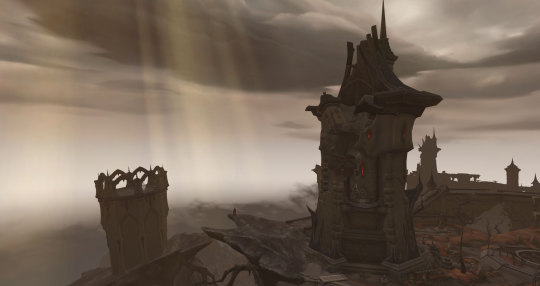
- When the drought started, Sire Denathrius used the spires of Revendreth to siphon ambient anima and add it to his hidden stores within Castle Nathria. It said that he was the “architect” of the drought (95).
- Sinfall tower is where Denathrius first founded the Court of Harvesters (102).
- Surprisingly, the walls of Sinfall withstood the Light’s bombardment in the Ember Ward. Rumor has it that this is because the defenses Denathrius implemented to contain the powers within Sinfall were so strong they kept even the Light at bay (102).
- The Venthyr’s unique ability to wend through the shadows is considered translocation magic (105).
Chapter Seven: Maldraxxus
- The Primus has the power to alter the landscape of Maldraxxus. Supposedly, he shaped the realm so it would serve as an ideal training ground for the ultimate army (112).
- Each of the five houses embodies one of the five traits of the ideal champion of Death (114).
- According to legend, the only losses the Primus ever suffered were intentional (116).
- The Primus, an expert in runes and runic power, created the language of Domination expressly to bind the Jailer within the Maw (116, 120).
- Each symbol in the Primus’ runic language represents a specific word tied to the foundations of Maldraxxus and its five houses. These could consist of anything from simple commands to necromantic energy manipulation and be used to imbue weapons with dark power or as a focus of binding magic, among other things (118).
- Death Knights emblazon their weapons with these runes of domination, though it is unclear how they ever came to learn Runeforging when it originated in the Shadowlands (118).
- The Jailer’s true name is said to hold dark power, which is why he is often referred to as the “Banished One” or “the Jailer” in official records (120).
- It is theorized that the Jailer learned to harness the Primus’ power of Domination for himself and ultimately used it to break his prison (121).
- Information exchanged in soulbinding does not completely fade, even if one of the bondmates should perish (126).
Chapter Eight: The Maw

- Many afterlives dedicated to the temporary punishment of souls exist, not just Revendreth (132).
- Before the Arbiter was broken, very few souls were ever sent directly to the Maw. If they indicated that they had even the slightest chance of atoning for their sins, they were sent to Revendreth (132).
- Cartel Ta’s archives contain no accounts of the Jailer’s appearance or his purpose beyond overseeing the souls in the Maw (135).
- It is pointed out how odd it is that a Waystone – a form of translocation – was placed in a realm explicitly meant to be inescapable. The Brokers consider two theories: the first asserts that the Waystone was intended as a failsafe in case any souls should arrive in the Maw that were not meant to be there. The second, on the other hand, claims the First Ones foresaw the coming of the Maw Walkers and placed the Waystone there for their inevitable arrival (141).
- Despite the numerous deaths he endured, Kel’Thuzad was never actually judged by the Arbiter until his final death during the war against the Lich King (142).
- One Broker believes the Arbiter’s judgement of Kel’Thuzad may have been manipulated to ensure he ended up in Maldraxxus, where he could further the Jailer’s schemes (142).
- As the troll death deity, Mueh’zala once demanded his followers perform brutal displays of worship. His needs were so extreme that he continued to thrive upon their fear and despair after they died, preventing them from passing on to the rest of the Shadowlands (144).
- However, troll civilization eventually outgrew Mueh’zala’s interest in cruelty and death. Determined not to fade into obscurity, the loa of death extended an offer to one of his priests, a troll named Bwonsamdi: in exchange for becoming Mueh’zala’s successor, Bwonsamdi was to deliver a regular tribute to the loa, thereby ensuring Mueh’zala would always have the worship he craved (145).
- When the Arbiter broke, Bwonsamdi tethered the souls of dead trolls to his Necropolis to prevent them from passing on to the Maw and empowering the Jailer. Mueh’zala, who had been in league with the Jailer for some time, was enraged at this and attacked Bwonsamdi in the Other Side (145).
- Mueh’zala brokered the deal with Odyn in which the titan-forged Keeper gave his eye to peer into the Shadowlands (145).
Chapter Nine: The First Ones and the Grand Design
- The Brokers set out from their realm of origin upon great barge cities to discover the truths of the First Ones (149).
- Other heretofore unknown First Ones realms include places like Baraneth and Nirem-Ahn. While the mortals know little about these realms, it seems the Brokers have already been to them (149, 151).
- Cartel Al outbid Cartel Ta on leading the expedition to seek out the Sepulcher of the First Ones (151).
- The First Ones were the progenitors of all realities and Pantheons (151).
- The language of the Titans uses the same word for “created” and “Ordered” (154).
- “Zereth” – first heard in the name of the First Ones realm, Zereth Mortis – translates to either “keystone” or “cornerstone” [NPC: Tal-Galan Dialogue], (160).
Epilogue
- Ta’lora, a Broker of Cartel Ta, has put forth the suggestion that their cartel should expand their market to the mortal plane to overcome the achievements of their rivals in Cartel Ve (163).

Dreadshade is a species of lasher known for producing an extract that has highly versatile, albeit potentially deadly, properties [Item: Dreadshade Extract]. Maldraxxi alchemists of the House of Plagues cultivate the plant to use as a reagent in some of their concoctions, many of which are no doubt extremely toxic. That said, dreadshade has other known practical applications. For example, one of the house’s foremost plague devisers planned to use dreadshade extract in a potion that would effectively “preserve” the imbiber [Quest: Plague is Thicker Than Water,Quest: By Any Other Name].
Dreadshade is said to be the carrier of Solanum cerinthe [Quest: By Any Other Name]. What this is, however, is unclear, though the name suggests it is the scientific name for a plant or fruit.
Meragg is just having the time of her life in Maldraxxus. Draka’s there, she’s been adopted by the sweetest old plague doctor, and some rando at the arena just called her “sister”. She hopes this is where she ends up when her time comes for real.
Post link

